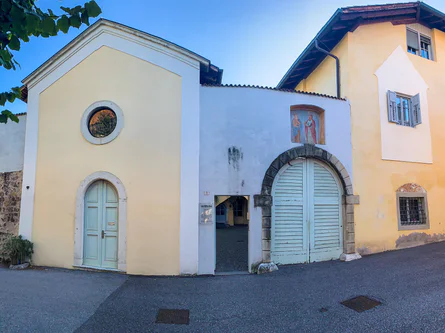In lieu of the parish chapel built in Widum itself under parish priest Paul Nardin, a free-standing and somewhat larger Widum chapel was built in the courtyard in 1869 under parish priest Johann Clauser. It is dedicated to St. John of Nepomuk. The parish with its vaults at ground level, flight of stairs to the 1st floor, and the window and doorframes made out of stone is one of the most ancient buildings in Auer/Ora. It was renovated and extended in an exemplary manner by parish priest Peter Paul Hofmann in 1992. In addition to the parish flat, it houses rooms for the church associations as well as small and large parish rooms.



























































